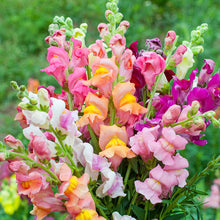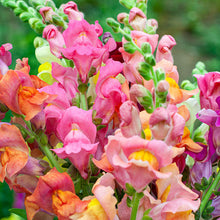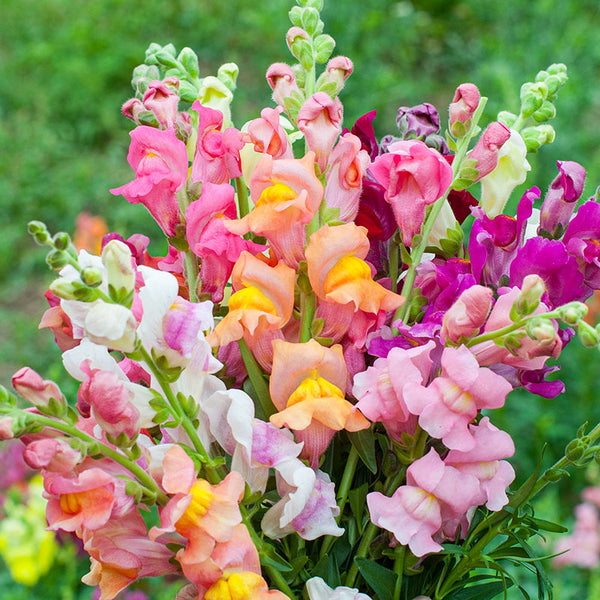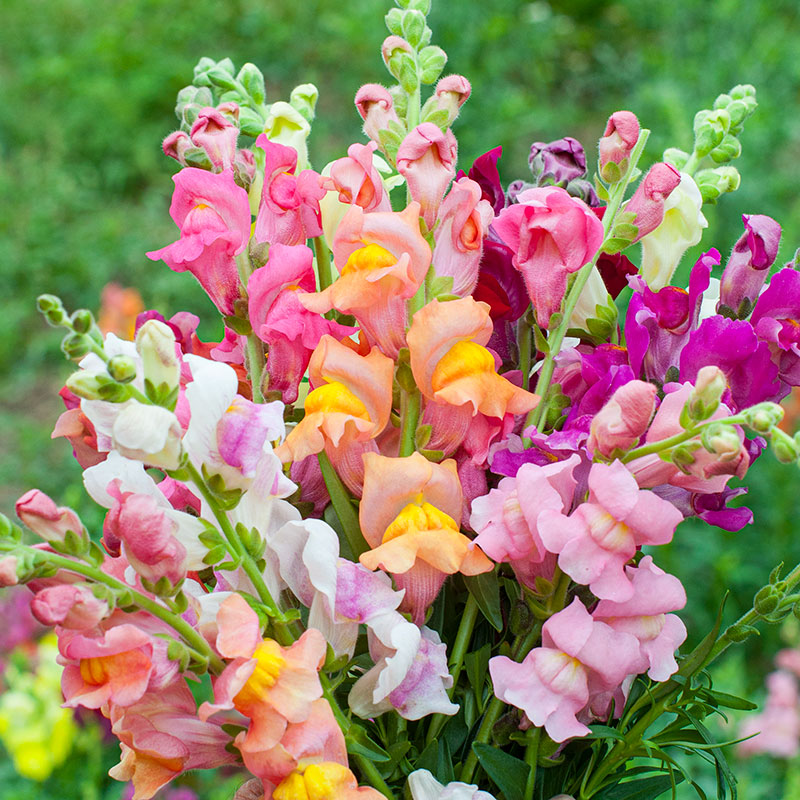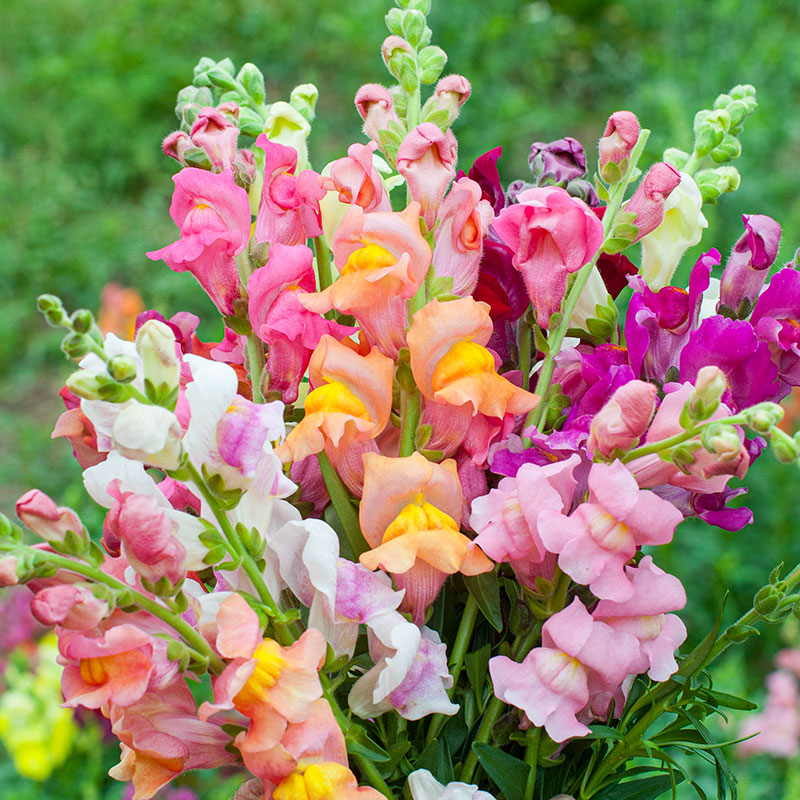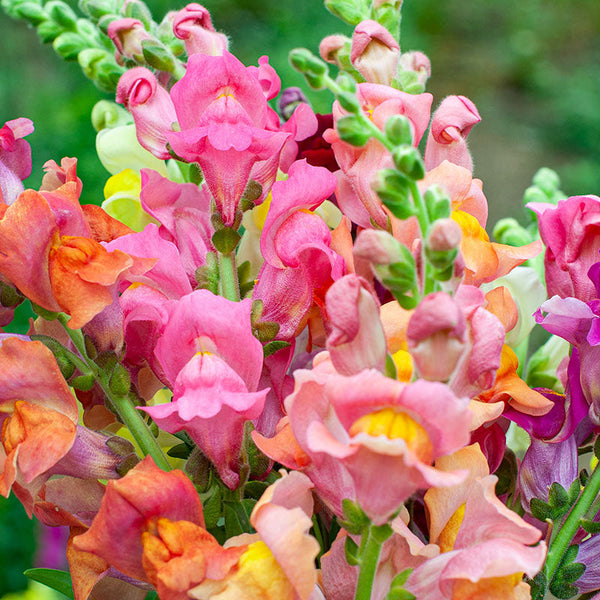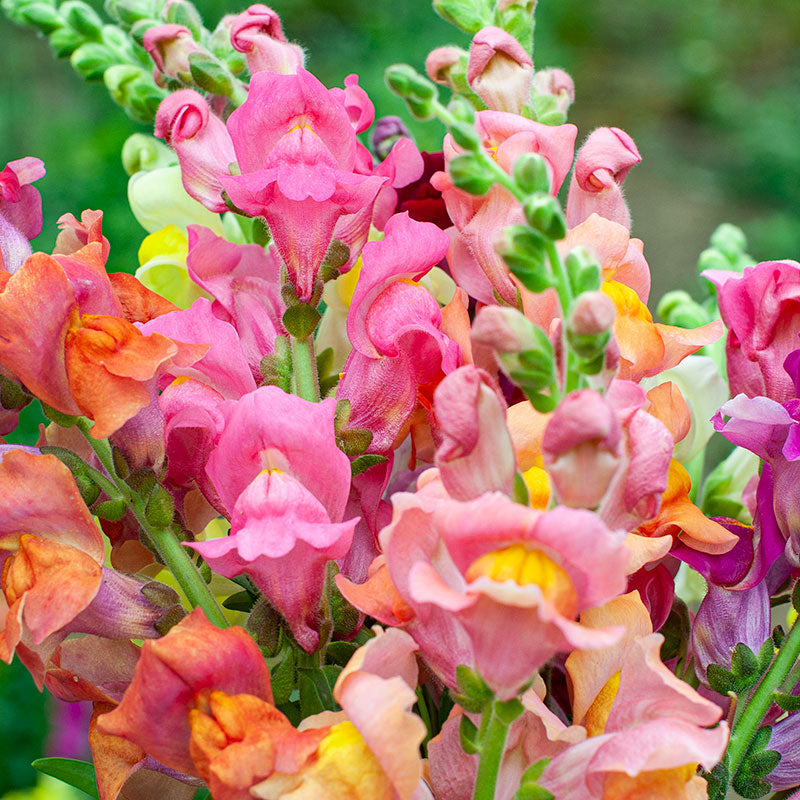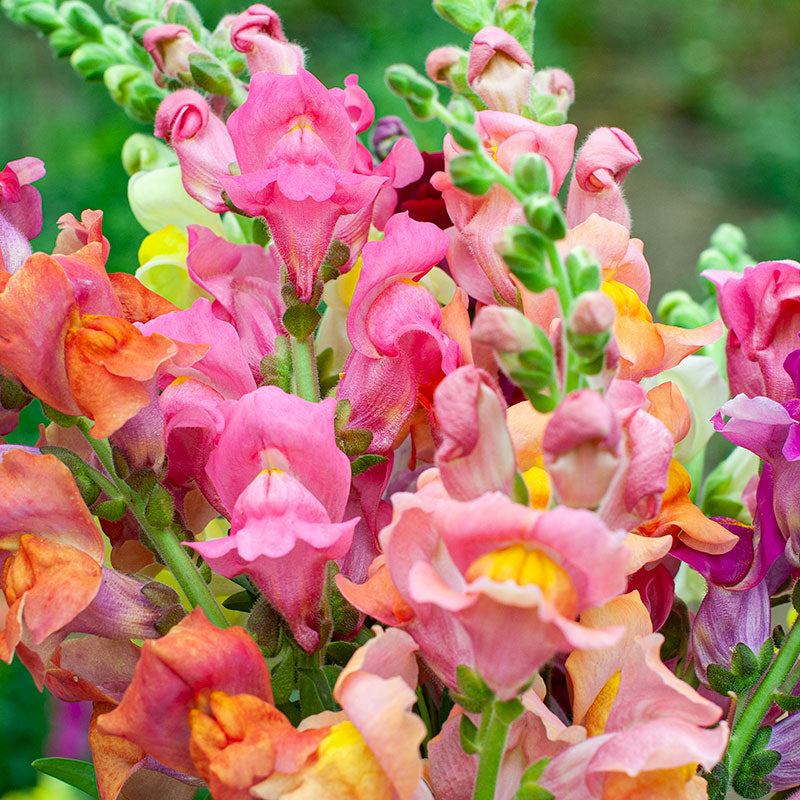SOWING INSTRUCTIONS
Depth:
Chill seed 2 days in refrigerator before sowing. Sow thinly on surface and lightly press in, as they require light to germinate.
Seed To Bloom:
12-14 weeks
Starting Indoors:
Recommended. Start in containers 8-10 weeks before last spring frost. Keep at about 60-70°F. A mix specifically for seed germination with added vermiculite is the preferred growing medium to prevent fungal problems. Water only from below by setting containers in a tray.
Starting Outdoors:
Sow 1-2 weeks before last frost for late summer to fall bloom. Mix seeds with fine sand and sow thinly.
WHEN TO SET OUTSIDE
After last spring frost, or in autumn in zones 8+
PLACEMENT & CULTIVATION
Snapdragons are native to France and Spain but have been cultivated in gardens for hundreds of years; early gardeners called them Calves' Snout and Lion's Mouth after the hinged florets. They are indispensable in cutting and cottage gardens due to their handsome glossy dark green foliage and numerous floral spikes crowded with bloom, adding contrast to gardens with rounded forms. A favorite cut flower that blooms all summer in areas where nights cool down and late spring and fall in hotter regions. To promote bushy growth, pinch the plant when setting it out, and stake it early with twiggy brush or crossed bamboo stakes in windy gardens to support the tall flower-filled stems. Native bumblebees, heavy enough to shoulder open the hinged flowers, emerge rich in nectar and covered with pollen, carrying the gold dusting to the next blossom. After the first flush of bloom, deadhead, removing the spikes with developing seeds down to vegetative branching and fertilizing the trimmed plants for renewed flowering until late fall.
Watering Details:
About 1" per week, moderate tolerance to dry soils once established.
Soil pH:
Prefers neutral but will tolerate slightly acidic to slightly alkaline
Fertilizer:
Fertilize with an organic flower fertilizer monthly.
Diseases & Pests:
Aphids may be an issue—hose down plants with a heavy stream of water regularly until the pest is gone. Place in an area with good circulation to prevent fungal problems. If such issues do arise, plants can be sprayed with an organic fungicide.
When to Cut for Bouquets:
Harvest when 1/3 of the florets are open.






























